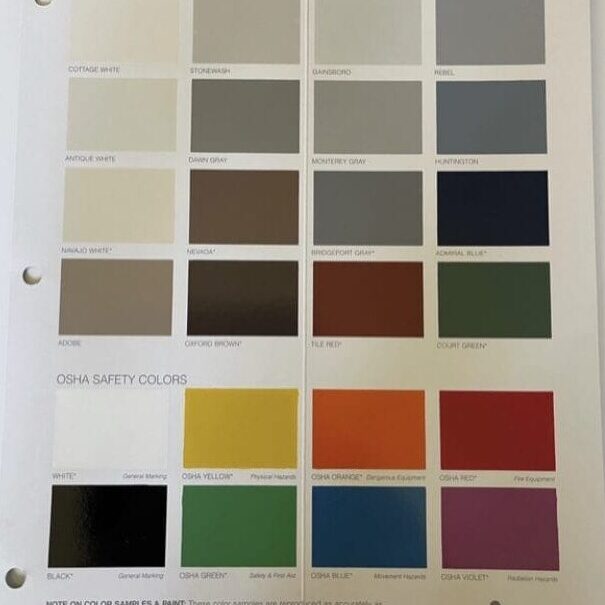These Sinclair Color Charts, in use from the late-1980s to the early-1990s, showcased a range of consumer and industrial colors. Here are three different Sinclair Paint specialty color brochures of the era.
Sintec
Sintec was an consumer paint product designed to withstand the rigors of high traffic areas. Its durable formula ensured long-lasting performance, making it a preferred coating for industrial applications. Moreover, it was formulated to resist mild chemicals and cleaners, enhancing its suitability for prolonged use on a wide range of surfaces.
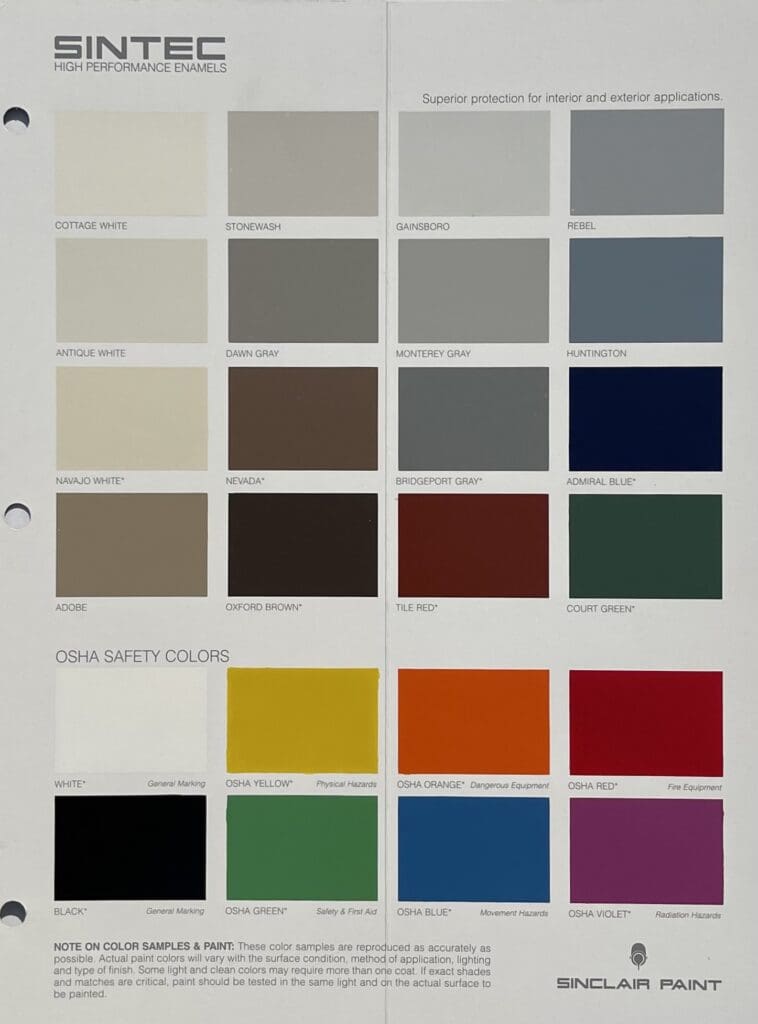
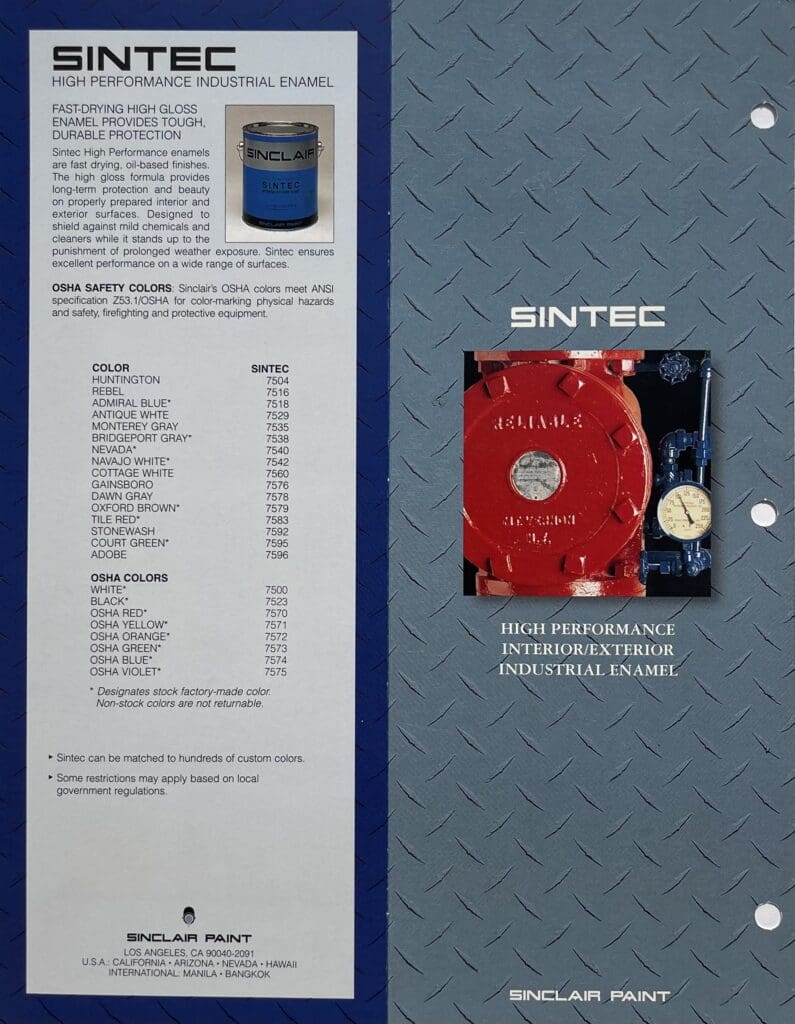
The Sintec Chart is a curated color palette for industrial settings. Departing from the earthy tones prevalent in the 1970s, the 1980s introduced more audacious colors characterized by vivid hues and metallic accents. These colors not only reflected the technological progress of the time but also aimed to leave a lasting impression.
Colors
With vibrant reds, bold yellows, intense blues, and deep greens, the 1980s industrial color selection evokes dynamism and visual interest. These hues conveyed energy into industrial design schemes, creating a visual environment that was both stimulating and secure.
However, this vintage color chart contains something more than just its practicality. It exudes a nostalgic charm, encapsulating the essence and aesthetic of 1980s industrial color design. The thoughtful layout and presentation of the color options further enhance its appeal, serving as an archival record of the colors used during that era.
Sinclair Stainteke Wood Stain Colors
In the 1980’s, Sinclair Paint produced the Stainteke Semi-Transparent Wood Stain Colors Collection. It was designed to highlight and enhance the natural beauty of wood surfaces. With a spectrum of appealing hues, they added warmth and character to decorating schemes of the era.
Stainteke boasted a range of tones, from rich earthy browns to subtle grays and greens. The stains struck a balance between enhancing the wood’s natural grain and providing a layer of color. It allowed for a nuanced, textured appearance that provided depth and character to wood. The result was a finish that didn’t overpower the grain, but instead showcased its inherent beauty.
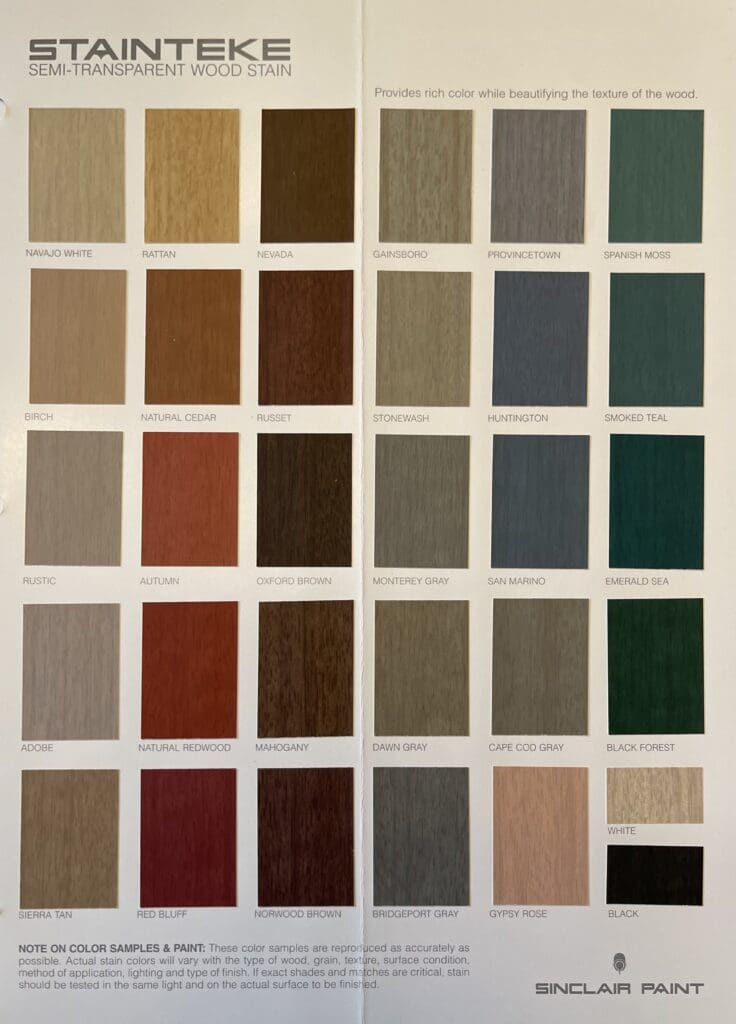
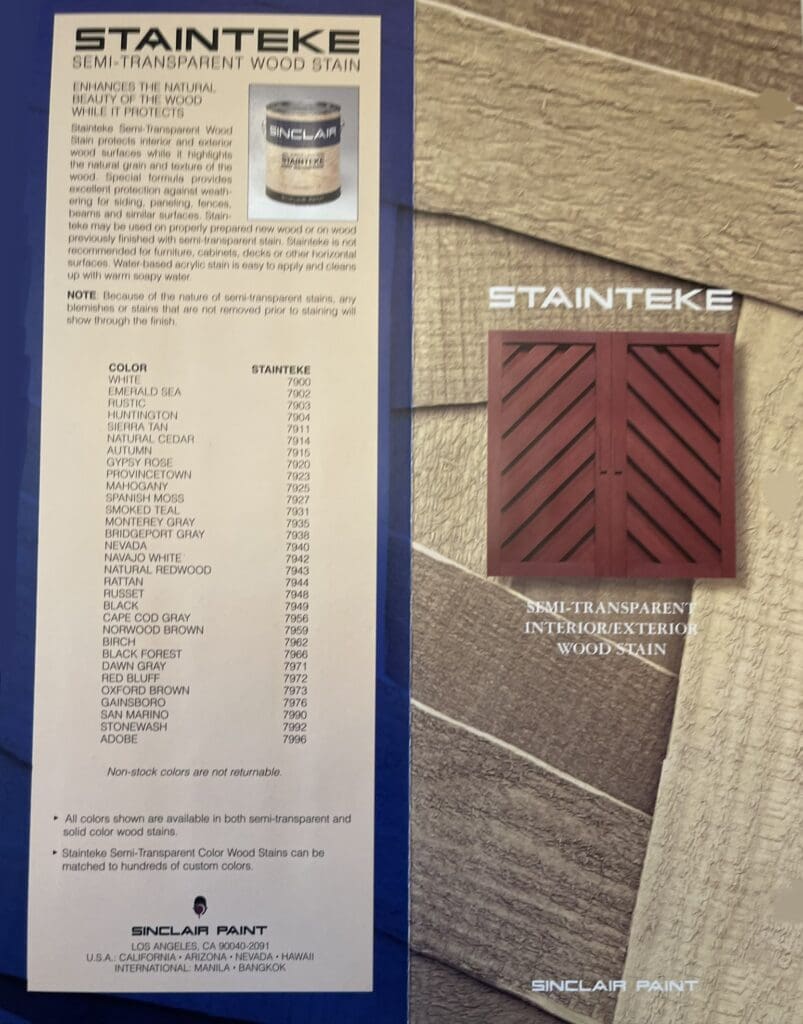
Sinclair Semi-transparent stains had a translucent quality that allowed wood’s natural characteristics to vary throughout the day with the play of light. This adaptability made it an excellent choice for furniture, decks, fences, and interior woodwork.
Stainteke provided a protective layer against the elements that allowed the wood to breathe. This durability ensured colors that stood the test of time, maintaining vibrancy even in outdoor applications. Sinclair Stainteke Colors provided not only visual beauty for wooden surfaces, it was also a practical and durable coating. With these thoughtfully curated colors, wood’s natural beauty took center stage.
Floor & Deck Colors
These Sinclair color charts for floor & deck were in use from the late 1980’s to the mid 1990’s. It contains standard floor and deck enamels plus traffic marking paint for asphalt and concrete. The paints came in an acrylic water-based formulation, an oil based paint and a two component epoxy, which was the strongest of all the products. Sinclair Paint is no longer available.
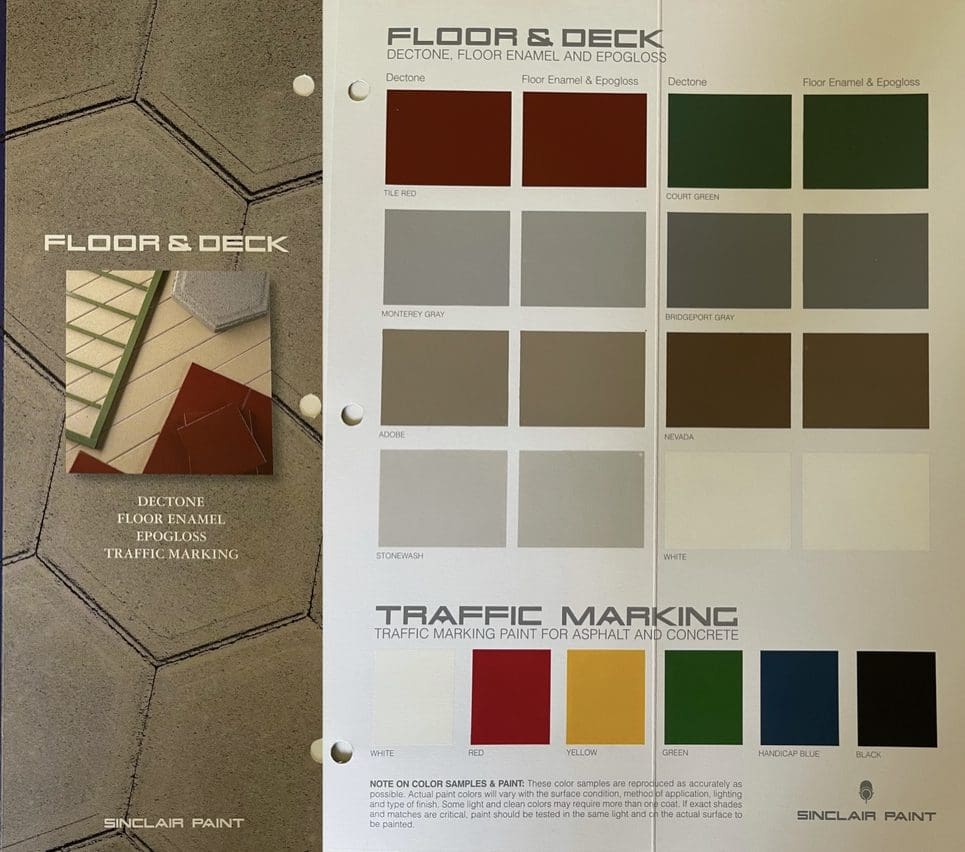
https://alllosangelespaintingcompany.com/2023/12/sinclair-paint-exterior-colors/
